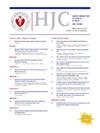Evaluation of cardiovascular risk factors in children aged 6–16 years and their evolution in early adulthood in a 10-year follow-up study
IF 3
3区 医学
Q2 CARDIAC & CARDIOVASCULAR SYSTEMS
引用次数: 0
Abstract
Objective
Obesity and arterial hypertension (AH) in children represent well-recognized risk factors for cardiovascular (CV) events during adult life. We investigated any changes regarding several CV risk (CVR) factors in children after a 10-year follow-up period.
Methods
A cohort of 143 healthy children, elementary/high school students, 6–16 years old, was initially evaluated in 2010–2011 regarding CVR factors [obesity, blood pressure (BP), aortic stiffness (PWV), lipid profile] plus food habits/sports activity. At 10-years follow-up (2020–2021), 63/143 (44%) young adults were re-evaluated.
Results
Children with obesity (45%) had increased BP (p < 0.001) and a less favorable LDL-C/triglycerides profile (p = 0.001) compared to overweight/normoweight ones. In a 10-year follow-up, obesity and exercise improved (p < 0.001 and p = 0.005), systolic BP (SBP) (102 ± 13 vs. 118 ± 11 mmHg, p < 0.001) and PWV increased (6.1 ± 1 vs. 7.7 ± 1.1 m/sec, p < 0.001), LDL-C (96 ± 21 vs. 86 ± 24 mg/dl, p = 0.004) and HDL-C + (64 ± 18 vs. 55 ± 10 mg/dl, p < 0.001) decreased, triglycerides increased (62 ± 21 vs. 73 ± 34 mg/dl, p = 0.04), and food approached the western model of nutrition (less fish/fruits). In children/young adults, BMI was associated with age (Beta = 0.47, p < 0.001 and Beta = 0.36, p = 0.004), SBP (Beta = 0.46 and Beta = 0.52, p < 0.001), and LDL-C (Beta = 0.27 and Beta = 0.44, p < 0.001).
Conclusions
In children with obesity, increased BMI and waist circumference were related to SBP and a less favorable lipid profile. At the 10-year re-evaluation, obesity was partially improved, physical activity was increased, and SBP had reached the high-normal levels in a substantial number of young adults, while lipid profile was less favorable (for HDL-C/triglycerides) compared to baseline evaluation. Our results highlight the evolution of CVR factors from childhood to early adulthood.

在一项为期 10 年的跟踪研究中,对 6-16 岁儿童的心血管风险因素及其在成年早期的演变情况进行了评估。
目的:儿童肥胖和动脉高血压(AH)是公认的成年后心血管(CV)事件的风险因素。我们调查了儿童的几种心血管风险(CVR)因素在 10 年随访后的变化情况:方法:2010-2011 年,我们对 143 名 6-16 岁健康儿童(小学生/高中生)的心血管风险因素(肥胖、血压、主动脉僵硬度(脉搏波速度)、血脂)以及饮食习惯/体育活动进行了初步评估。在 10 年的随访中(2020-2021 年),63/143(44%)名青少年接受了重新评估:结果:肥胖症儿童(45%)的血压升高(p结论:肥胖症儿童的血压升高可能与饮食习惯有关:在肥胖儿童中,体重指数和腰围的增加与 SBP 和较差的血脂状况有关。在 10 年的重新评估中,肥胖情况得到了部分改善,体力活动增加,相当多的年轻成年人的 SBP 达到了正常水平,而血脂状况(高密度脂蛋白胆固醇/甘油三酯)与基线评估相比则较差。我们的研究结果突显了从儿童到成年早期心血管风险因素的演变。
本文章由计算机程序翻译,如有差异,请以英文原文为准。
求助全文
约1分钟内获得全文
求助全文
来源期刊

Hellenic Journal of Cardiology
CARDIAC & CARDIOVASCULAR SYSTEMS-
CiteScore
4.90
自引率
7.30%
发文量
86
审稿时长
56 days
期刊介绍:
The Hellenic Journal of Cardiology (International Edition, ISSN 1109-9666) is the official journal of the Hellenic Society of Cardiology and aims to publish high-quality articles on all aspects of cardiovascular medicine. A primary goal is to publish in each issue a number of original articles related to clinical and basic research. Many of these will be accompanied by invited editorial comments.
Hot topics, such as molecular cardiology, and innovative cardiac imaging and electrophysiological mapping techniques, will appear frequently in the journal in the form of invited expert articles or special reports. The Editorial Committee also attaches great importance to subjects related to continuing medical education, the implementation of guidelines and cost effectiveness in cardiology.
 求助内容:
求助内容: 应助结果提醒方式:
应助结果提醒方式:


